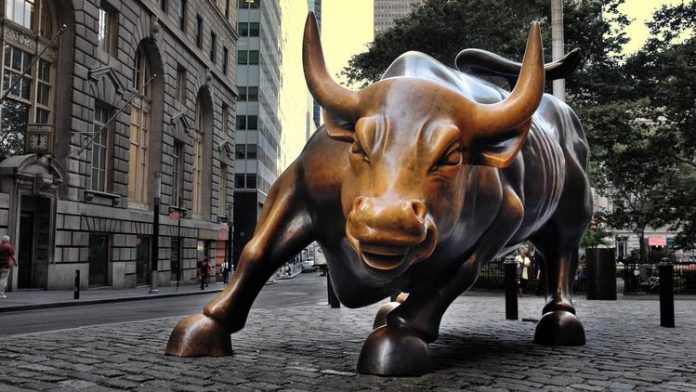Stocks jumped higher this morning in a bullish breakout that sent two of the major indexes to new all-time highs. The S&P 500, in particular, seems to have achieved “escape velocity” by surpassing key resistance.
And it all has to do with a lift in sentiment, courtesy of Treasury Secretary Steven Mnuchin and House Speaker Nancy Pelosi. Mnuchin said he’d speak with Pelosi about “keeping the government running,” and remarked that “I’m sure we’ll also be mentioning Covid relief.”
Moments later, a group of bipartisan lawmakers revealed a $908 billion stimulus package – something they claim could break the ongoing Congressional gridlock. $208 billion of the package is earmarked for Paycheck Protection Program (PPP) small business loans.
As a result of the announcement, Wall Street’s become even more confident that the stock market will continue to roar through the holiday season.
“December looks like it will be a very strong finish for 2020,” wrote Fundstrat’s Tom Lee, who continued, adding that when the S&P gained more than 10% in November in years past, December always provided additional returns.
“[Historical performance] confirms our view that strong markets finish strong.”
Unlike in the past, however, the current November rally has been driven almost entirely by vaccine hopes. 2020 was also an anomaly in that a pandemic initially caused a market-wide crash.
But what hasn’t changed over the years is a bullish addiction to stimulus and dovish monetary policy. Fed Chairman Jerome Powell said that the U.S. economic outlook is “extraordinarily uncertain,” which has many investors believing that the Fed will kick off another round of quantitative easing (QE) sometime soon.
Powell needs a reason to do so. A struggling U.S. economy would certainly be enough to justify QE in the eyes of Congress. Both Powell and Mnuchin will be speaking in front of a Congressional committee later this week.
“The rise in new Covid-19 cases, both here and abroad, is concerning and could prove challenging for the next few months,” Powell explained in a prepared statement.
“A full economic recovery is unlikely until people are confident that it is safe to reengage in a broad range of activities.”
So, ironically, if the economic outlook remains poor, the bull run should persist. On the other hand, a better-than-expected economic performance could shut off the Federal “gravy train” of liquidity and stimulus, cratering short-term sentiment.
This, however, isn’t unique to the post-Covid world. Back in 2018, Powell attempted to raise interest rates and induce quantitative tightening when the U.S. economy showed surprising strength.
Powell’s gambit was a disaster. The market sunk rapidly and the Fed was forced to lower rates once more.
It’s long been said that QE is a “roach motel;” once you check-in, you can never check out.
And following the upcoming glut of stimulus and QE, it’ll be renovated into a “five-star, luxury roach resort.” Not only will the U.S. – along with the rest of the world, for that matter – be unable to leave…
They simply won’t want to. And who could blame them? If equities continue rising and inflation isn’t spiking, why not continue with the easing?
The massive increases in the money supply will ultimately cost American households dearly over time in terms of real market returns (when adjusted for long-term inflation). The economies of the world should continue to stagnate.
But, stocks will climb higher and higher, keeping Wall Street happy. At least, for the time being.
Don’t forget that two of the biggest “fiat currency alarms” – a surge in gold and Bitcoin – are going off. It should be highly concerning, but nobody’s interested in discussing it.
Affluent investors are scared, and they have every right to be.
Until stocks start falling, however, it doesn’t make sense for them to sell-off completely. So, the charade is likely to continue.
Regardless of how healthy the economy, and the dollar, really is.








